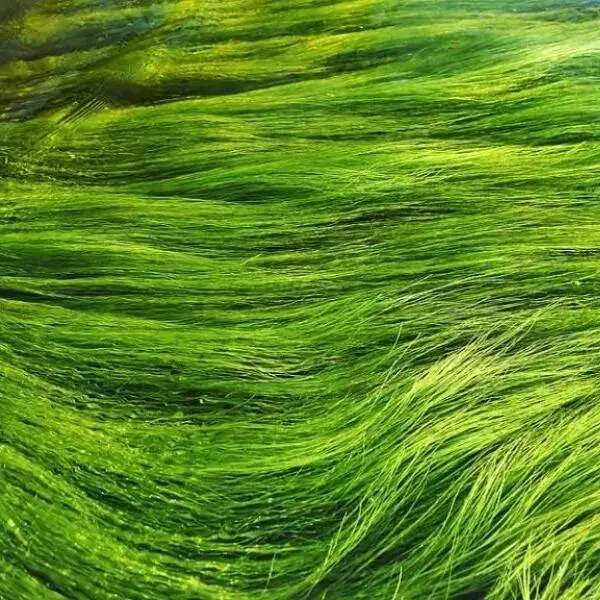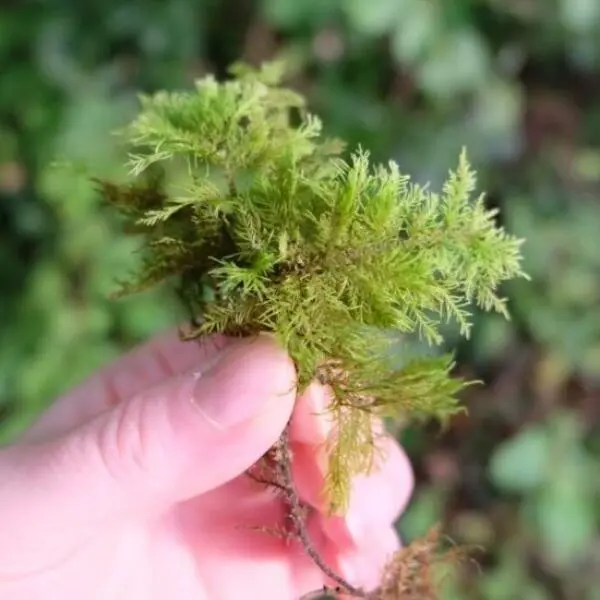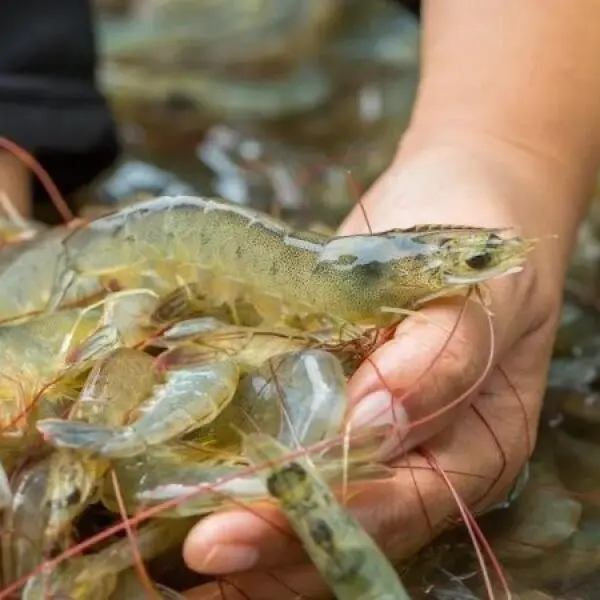
Moss is a unique and resilient plant that has adapted to survive in diverse ecosystems for hundreds of millions of years. Known for its simplistic structure and incredible durability, moss belongs to a group of plants called bryophytes. In this article, we’ll explore what moss is, its defining characteristics, and answer common questions like "Does moss have roots?" and "Is moss harmful?" We’ll also dive into its ecological roles and uses.
What is Moss?
Moss is a type of non-vascular plant, meaning it does not contain the vascular tissues (xylem and phloem) that transport water and nutrients in most plants. Belonging to the bryophyte group, moss lacks the complex structures seen in vascular plants, which helps it survive in environments where other plants might fail.
Moss typically has a simple structure with small green leaves attached to a stem-like axis. Without an internal system for transporting water, it relies on its external environment, absorbing moisture directly through its leaves. This adaptability allows moss to survive in both wet and dry conditions by adjusting its metabolic activities, often going dormant when water is scarce. There are over 12,000 moss species, each adapted to thrive in different habitats across the world.
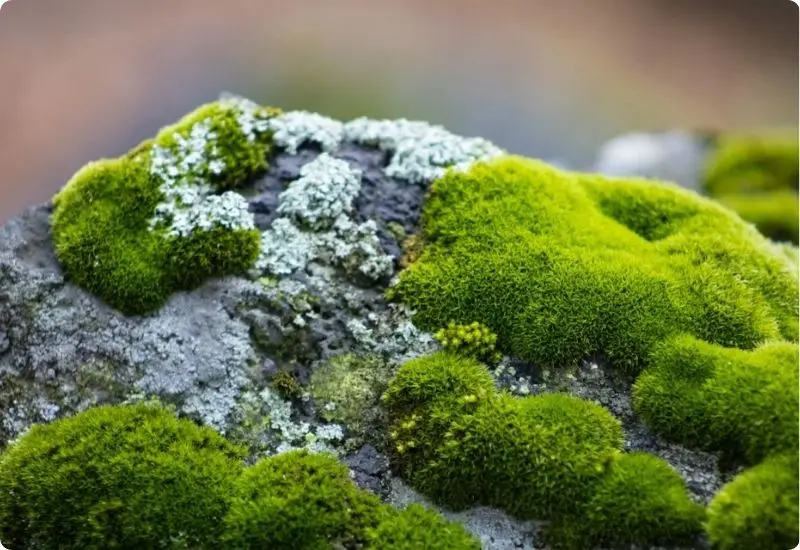
What is Moss?
Characteristics of Moss
Understanding moss involves examining the unique features that distinguish it from other plants. Here are some core characteristics of moss:
- Non-Vascular Nature: Unlike most plants, moss does not have vascular tissues to transport water and nutrients internally. Instead, mosses absorb water directly from their surroundings through diffusion, which makes them dependent on moist environments for hydration.
- Small Size: Mosses are small, typically measuring only a few inches tall. Their compact size allows them to cover various surfaces like rocks, soil, and even tree bark, creating dense, soft mats of greenery that provide microhabitats for small organisms.
- Photosynthesis: Mosses perform photosynthesis, converting sunlight into energy, which helps sustain themselves and release oxygen into the atmosphere. This process is essential for their growth and contributes to their ecosystem as a source of oxygen.
- Rhizoids Instead of Roots: Mosses do not have true roots. Instead, they possess rhizoids—hair-like structures that anchor them to surfaces. These rhizoids do not absorb nutrients but help mosses attach securely to different substrates, allowing them to grow on hard, nutrient-poor surfaces like rocks and tree trunks.
- Moisture Dependence: Mosses rely on external moisture to remain active. Without an efficient water transportation system, they must absorb water from their surroundings, which explains their common presence in damp, shaded environments. When dry, many moss species enter a dormant state and can later revive when water becomes available.
- Life Cycle: Mosses have a unique life cycle that includes two stages: the gametophyte (sexual) and the sporophyte (asexual) stages. The gametophyte stage is the familiar green plant that produces reproductive cells. The sporophyte, which grows from the gametophyte, eventually releases spores, which germinate to form new moss plants.
- Environmental Impact: Mosses play an important ecological role by retaining moisture, preventing soil erosion, and serving as habitats for small invertebrates. Certain mosses can also regulate the humidity and temperature within the ecosystems they inhabit, making them valuable contributors to ecological balance.
Types of Mosses
Different moss species have evolved to inhabit specific environments. Here are a few major types:
- Aquatic Mosses: Found in ponds, streams, and other freshwater sources, these mosses contribute to the ecosystem by filtering water and creating habitat for aquatic life. They are adapted to live fully or partially submerged, where they absorb nutrients from the surrounding water.
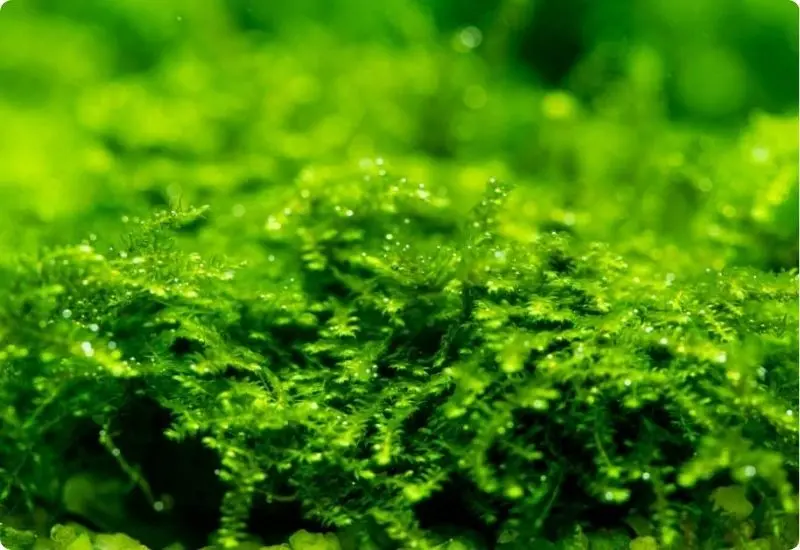
Aquatic Mosses
- Epiphytic Mosses: These mosses grow on trees and other plants without harming them. Commonly found in tropical rainforests, epiphytic mosses form thick mats on tree trunks and branches, contributing to the forest's unique biodiversity by providing habitat and moisture retention.
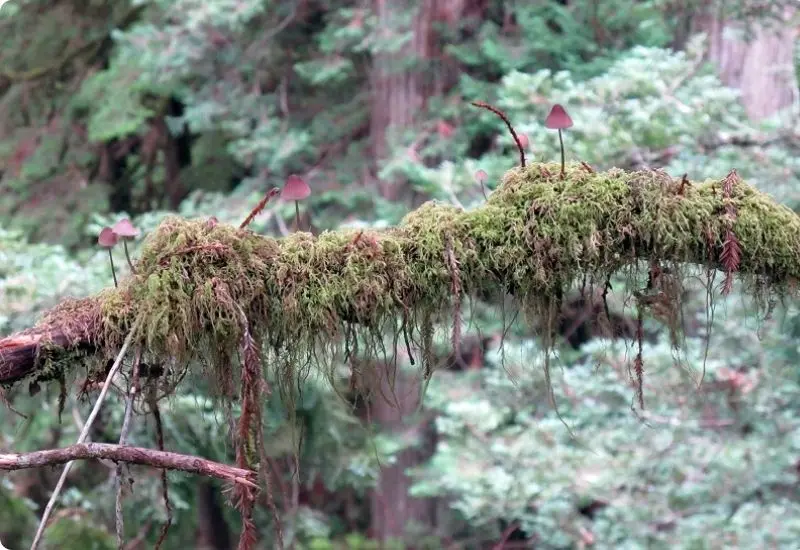
Epiphytic Mosses
- Terrestrial Mosses: These mosses grow on the forest floor or open ground, where they stabilize soil and prevent erosion. They are often found in shady, moist environments where they contribute to soil health by retaining water and providing shelter for small organisms.

Terrestrial Mosses
- Sphagnum Moss: Also known as peat moss, this type is commonly found in boggy, acidic environments and has remarkable water retention abilities. Sphagnum is widely used in horticulture for its ability to retain moisture in soil and provide aeration for plant roots.
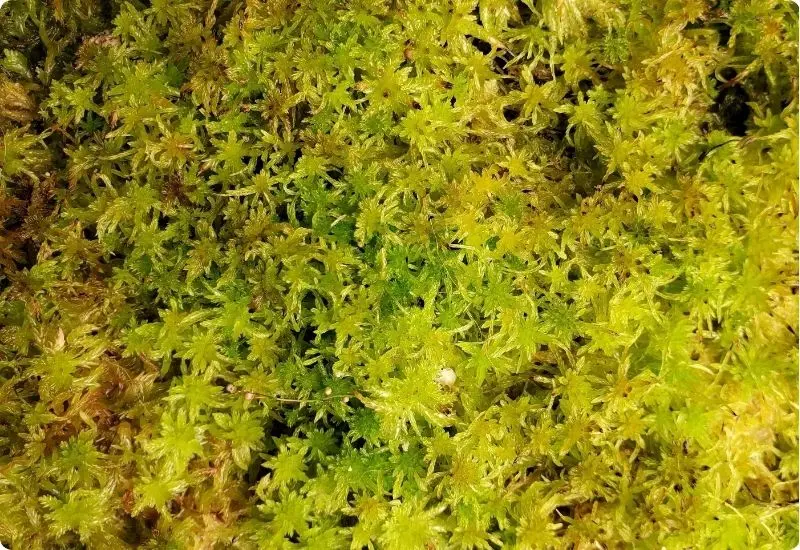
Sphagnum Moss
Moss Growth and Propagation
Mosses propagate through spores, unlike flowering plants, which use seeds. The moss life cycle is divided into two main stages: the gametophyte, which is the green, leafy stage, and the sporophyte, which grows from the gametophyte and releases spores for reproduction.
In the absence of a vascular system, mosses rely on environmental moisture to grow and reproduce, meaning they thrive best in damp surroundings. However, mosses are incredibly resilient, capable of surviving extreme conditions such as droughts by entering a dormant state. When water becomes available again, they quickly revive and resume growth.
Does Moss Have Roots?
A common question about moss is whether it has roots, as traditional plants do. Moss does not have roots in the conventional sense. Instead, it has thin, root-like structures called rhizoids, which secure it to surfaces without absorbing nutrients or water. This unique feature allows moss to grow on bare surfaces like rocks and tree bark, which would be unsuitable for most other plants.
Is Moss Harmful?
Moss is generally harmless and can even be beneficial in certain contexts. These are points that warrant attention:
- Environmental Benefits: Mosses act as natural filters for rainwater, absorbing pollutants and preventing soil erosion. In this way, moss contributes positively to the environment.
- Soil Health: Moss in gardens can help retain soil moisture and reduce compaction, supporting other plants by keeping the soil in good condition.
- Non-Invasive: Moss does not aggressively compete with other vegetation for resources, as its rhizoids are shallow and do not deplete nutrients in the soil.
- Aesthetic Value: Moss offers a natural aesthetic value, adding a lush green cover to landscapes and shaded areas where grass or other plants may struggle to grow.
In some cases, moss growth on lawns or structures can indicate poor drainage or compacted soil, which might need to be addressed if moss is undesired. However, moss itself poses no direct harm to plants or structures.
Which Plant is a Moss?
The term "moss" specifically refers to members of the Bryophyta division. Not all small, low-growing plants are mosses, although they may appear similar. True mosses may be exemplified by:
- Sphagnum Moss: Known for its exceptional water-holding capacity, Sphagnum is commonly used in gardening and horticulture.
- Cushion Moss: A compact moss that grows in dense clusters, often found in alpine environments where it helps stabilize soil and prevent erosion.
- Fern Moss: A delicate moss with fern-like fronds, commonly found on forest floors, where it adds to the ecosystem’s biodiversity by providing shelter for small organisms.
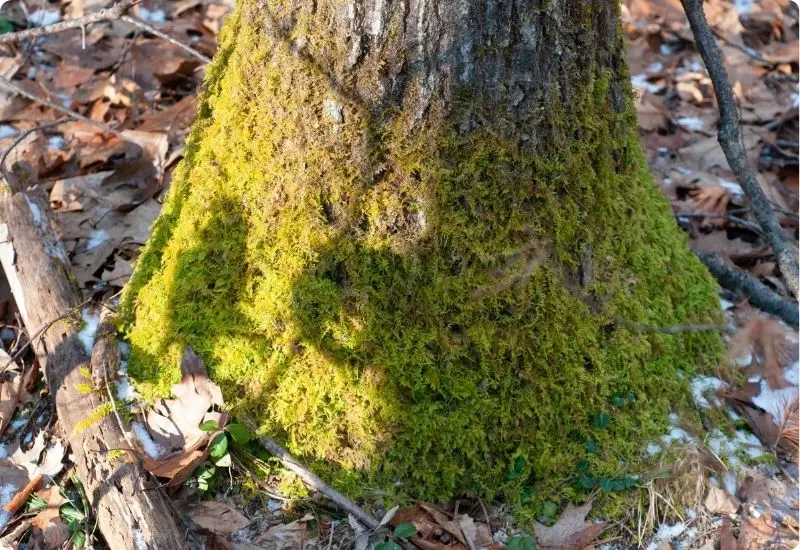
Fern Moss
Moss in Human Use
Humans have used moss in various ways for centuries. Sphagnum moss, for example, has antiseptic properties and high absorbency, making it useful as a natural bandage in ancient times. Today, it is widely used in horticulture to retain moisture in the soil, promoting healthier root growth in plants.
In landscaping, mosses add a unique, lush aesthetic, especially in Japanese gardens where they contribute to a calm and timeless atmosphere. Moss has also been used in environmental restoration projects to control soil erosion and restore native habitats.
Conclusion
Moss is an ancient plant that has evolved unique adaptations to survive in a range of environments, from dense forests to rocky surfaces. While it lacks the complex structures of vascular plants, such as roots and xylem, moss plays an essential role in ecosystems by preventing erosion, retaining moisture, and providing habitats for other organisms.
With its simple structure and high resilience, moss serves as an important part of our natural world. Its ecological roles, ability to survive extreme conditions, and practical uses for humans demonstrate its enduring value. Whether it’s covering the forest floor or enhancing a garden’s aesthetic, moss is a plant worth recognizing and appreciating for its contribution to biodiversity and environmental health.
Related Articles
Cyanobacteria vs Algae: Understanding Their Key Differences and Significance
Aquatic ecosystems harbor diverse photosynthetic organisms, with cyanobacteria and algae being two ...
What High Levels of Ammonia in the Blood Mean for Health
Ammonia is a naturally occurring substance in the body that is vital to certain metabolic processes. ...
Ammonia in Pool Water: Common Causes and Effective Solutions
Ammonia in pool water can be a surprising challenge for pool owners, leading to various water ...
Ever Wondered How Algae and Moss Differ?
Algae and moss are often mistaken for one another due to their green appearance and similar growth ...
Tired of pool scale? What causes white spots in your pool?
Pool scale is a common issue for pool owners, causing unsightly deposits and potentially damaging ...
Want to learn more about type of shrimp? From ocean to plate
Shrimp is a versatile and beloved seafood staple, but few realize the incredible variety of shrimp ...

